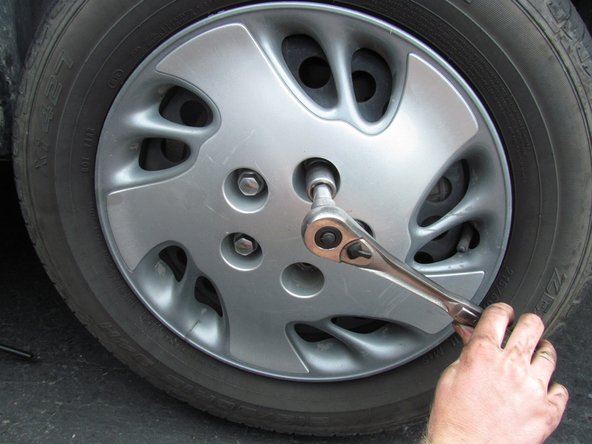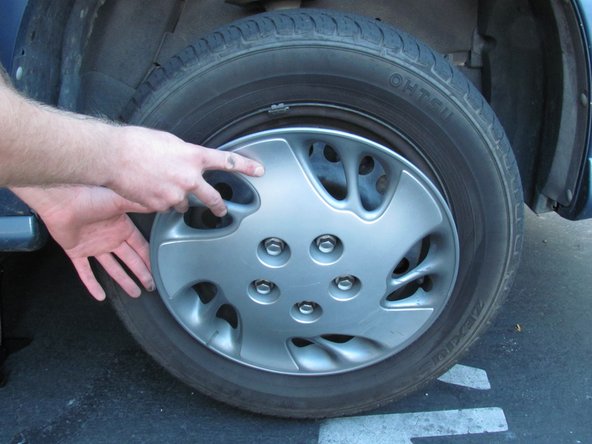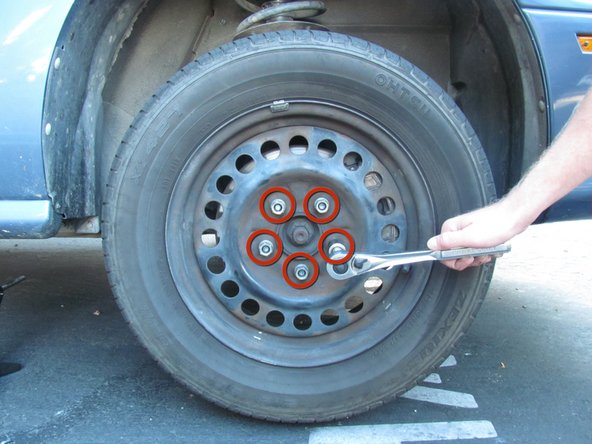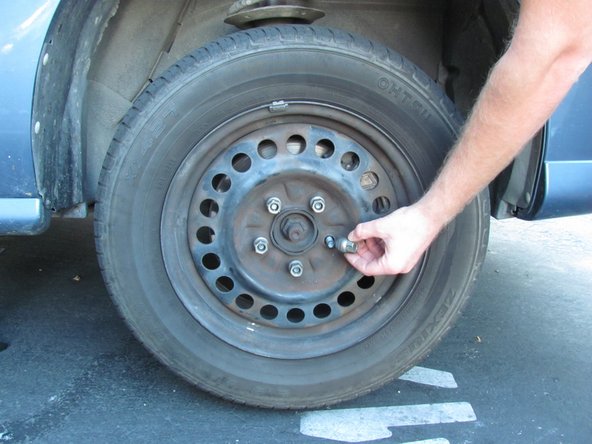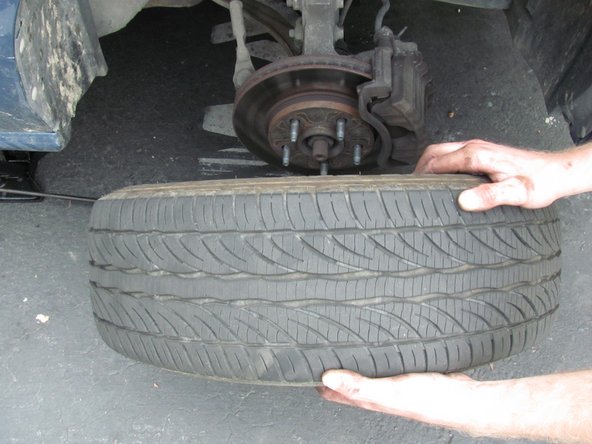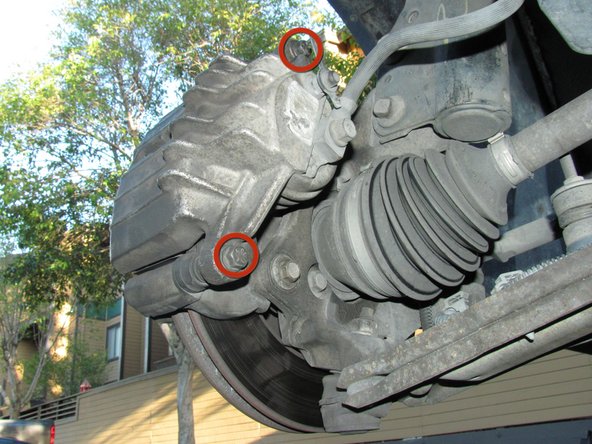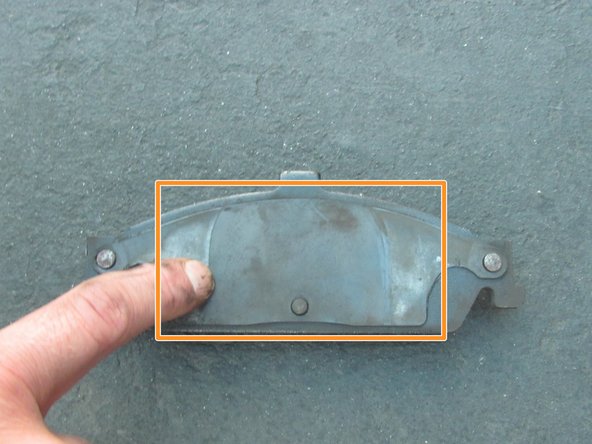Cette version peut contenir des modifications incorrectes. Passez au dernier aperçu vérifié.
Ce dont vous avez besoin
-
Cette étape n’est pas traduite. Aidez à la traduire
-
If using the car's emergency scissor-jack, identify the designated placement locations for this specific jack.
-
The jack needs to be placed behind the front tire in one of the two slots indicated by the red markers.
-
The slots are one foot behind each front tire, and 8-10 inches inward from the outer edge of the car.
-
-
Cette étape n’est pas traduite. Aidez à la traduire
-
Loosen the plastic lug nuts, located on the hub-cap, with a 19mm socket.
-
-
-
Cette étape n’est pas traduite. Aidez à la traduire
-
Loosen and remove the five metal lug nuts with a 19mm socket.
-
-
Cette étape n’est pas traduite. Aidez à la traduire
-
Loosen and remove the two bolts located on the backside of the caliper with a 12mm socket.
-
Remove the caliper from the mounting bracket.
-
-
Cette étape n’est pas traduite. Aidez à la traduire
-
Use a pry bar to remove the old brake pad from the bracket.
-
Use the same procedure for removing the pads on the other sides.
-
-
Cette étape n’est pas traduite. Aidez à la traduire
-
Pull the two caliper pins out of the mounting bracket by hand.
-
Before putting the new brake pads on, apply "Disc Brake Quiet" compound to the metal backing of the pads to keep them from squeaking.
-
Annulation : je n'ai pas terminé ce tutoriel.
8 autres ont terminé cette réparation.




